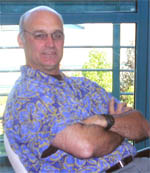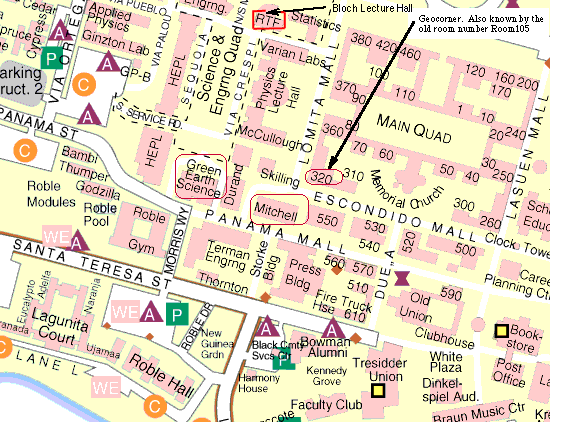see Map showing Mitchell
Map showing Bloch
Anyone wishing to attend the lecture only is welcome at no cost.
This will be the 352nd meeting since 1954.
Abstract
The paleorelief of mountain belts can be estimated from theChamberlain, C.P., Poage, M.A., Craw, D., and Reynolds, R.C., 1999, Topographic development of the Southern Alps recorded by the isotopic composition of authigenic clay minerals. Chemical Geology, 155, 279-294.
Chamberlain, C.P., and Poage, M.A., 2000, reconstructing the paleotopography of mountain belts from the isotopic composition of authigenic minerals. Geology, 28, 115-118.
Poage, M.A., and Chamberlain, C.P., 2001, Empirical relationships between elevation and the stable isotope composition of precipitation and surface waters: considerations for studies of paleoelevation change. American Journal of Science, 301, 1-15.
Poage, M.A., and Chamberlain, C.P., 2002, Stable isotopic evidence for a Pre-Middle Miocene rainshadow in the western Great Basin and Range: implications for the surface uplift of the Sierra Nevada. Tectonics v. 21, 16-1 to 16-10.
About the Speaker
Page Chamberlain is Professor/Co-director Stanford/USGS SHRIMP RG ion microprobe facility. Professor Chamberlain's research expertise is in the broad area of isotope geochemistry. His current research projects involve the use of isotopes as tracers to investigate geochemical processes in the earth interior and surface, climate change, and environmental problems. His research combine both field and laboratory components. The laboratories include a laser-based light stable isotope laboratory and the SHRIMP RG ion microprobe. Field locations include the Appalachians of New England, the Rocky Mountains of Wyoming, the Himalaya, the Southern Alps of New Zealand, and the Sierra Nevada of California.

Reservations: The preferred way to make reservations is simply to email Janice Sellers at janice@seismosoc.org by Friday, February 7, tell her you will attend, commit to pay, and bring your payment to the meeting. Janice always emails a confirmation; if you don't get one, assume email crashed yet again and email her a second time. A check made to"PGS"is preferred, payable at the meeting.
If you want to pay in advance:
Stanford faculty and students: Please make dinner reservations by Friday, February 7. Contact Dr. Juhn Liou via his mailbox (and leave check), Geological and Environmental Sciences Office, Geocorner - Bldg. 320 (Rm. 118). Make checks out to"PGS."
All others, including faculty and students from other Bay Area universities and colleges and USGS: Please make dinner reservations by Friday, February 7. Contact Janice Sellers, at Seismological Society of America, 201 Plaza Professional Building, El Cerrito, CA 94530, phone (510) 559-1780. Send check made out to"PGS"to Janice.
Dinner is $30.00. Includes wine (5:30 to 6:15 PM.), dinner (6:15-7:30 PM.), tax, and tip.
For students from all universities and colleges, the dinner, including the social half-hour, is $5.00 and is partially subsidized thanks to the School of Earth Sciences, Stanford University (Note, no-show reservations owe the full price).
Dues for Academic Year 2002-2003 ($10.00) should be sent to Janice Sellers, Seismological Society of America, 201 Plaza Professional Building, El Cerrito, CA 94530. Janice's phone: (510) 559-1780.
Officers: Bob Christiansen, President; Mike Diggles, Vice President; Vicki Langenheim, Secretary; Janice Sellers, Treasurer; Adina Paytan, Field-Trip Czarina

Click Here for Future Events
Date created: 01/16/2003
Last modified: 03/27/2003
Created by: Mike Diggles, Vice President, PGS.
c/o U.S. Geological Survey, MS-951, 345 Middlefield Road, Menlo Park, CA 94025. (650) 329-5404. email Mike Diggles at mdiggles@usgs.gov
